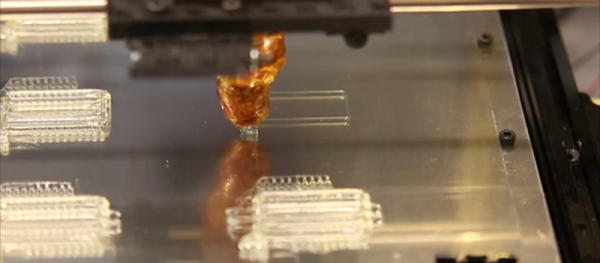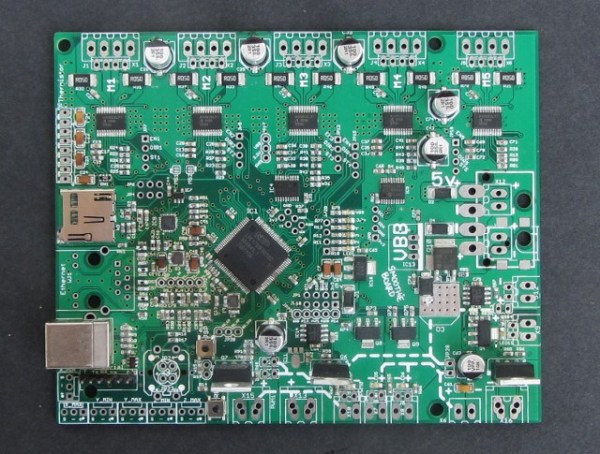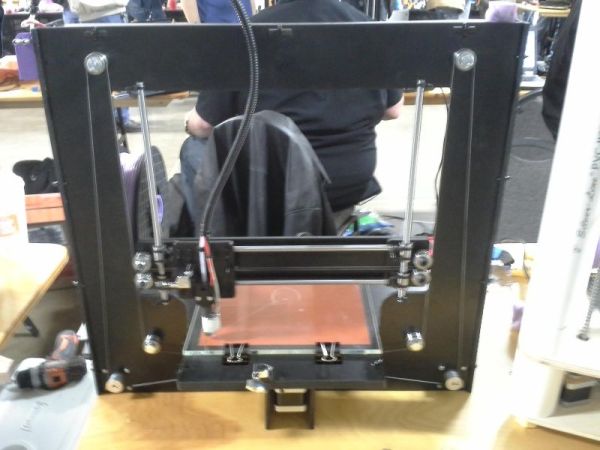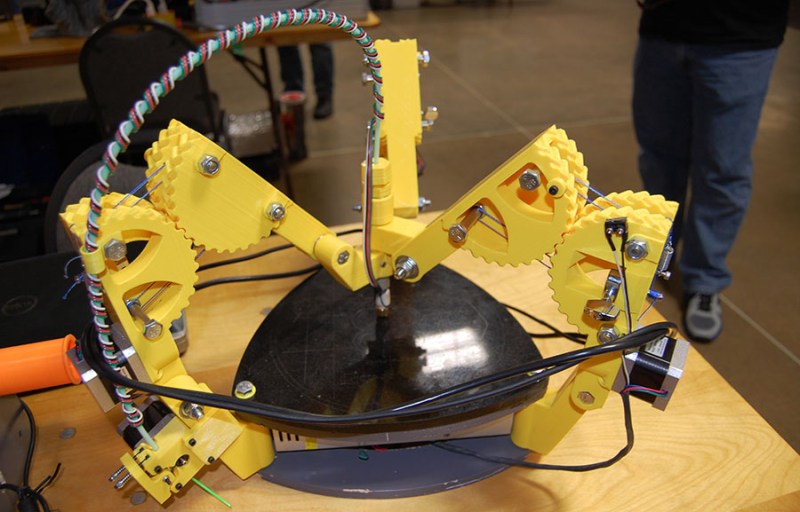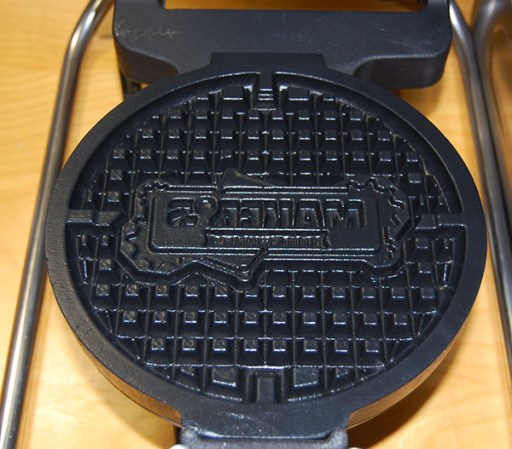There were a few keynotes at this year’s Midwest RepRap festival, and somewhat surprisingly most of the talks weren’t given by the people responsible for designing your favorite printer. One of the most interesting talks was given by [Jordan Miller], [Andy Ta], and [Steve Kelly] about the use of RepRap and other 3D printing technologies in biotechnology and tissue engineering. Yep, in 50 years when you need a vital organ printed, this is where it’ll come from.
[Jordan] got his start with tissue engineering and 3D printing with his work in printing three-dimensional sugar lattices that could be embedded in a culture medium and then dissolved. The holes left over from the sugar became the vasculature and capillaries that feed a cell culture. The astonishing success of his project and the maker culture prompted him and others to start the Advanced Manufacturing Research Institute to bring young makers into the scientific community. It’s a program hosted by Rice University and has seen an amazing amount of success in both research and getting makers into scientific pursuits.
One of these young makers is [Andy Ta]. An economics major, [Andy] first heard of the maker and RepRap community a few years ago and bought a MakerBot Cupcake. This was a terrible printer, but it did get him involved in the community, hosting build workshops, and looking into 3D printing build around DLP-cured UV resin. At AMRI, [Andy] started looking at the properties of UV-cured resin, figuring out the right type of light, resin, and exposure to create a cured resin with the right properties for printing cell colonies. You can check out [Andy]’s latest work on his webzone.
[Steve Kelly] has also done some work at AMRI, but instead of the usual RepRap or DLP projector-based printers, he did work with shooting cell cultures out of an ink jet print head. His initial experiments involved simply refilling an ink jet cartridge with a bacterial colony and discovering the cells actually survived the process of being heated and shot out of a nozzle at high speed. Most ink jets printers don’t actually lay out different colors on a precise grid, making it unusable for growing cell cultures. [Steve] solved this problem with an inkjet controller shield attached to a RepRap. All of [Steve]’s work is documented on his Github.
It’s all awesome work, and the beginnings of both bioengineering based on 3D printers, and an amazing example of what amateur scientists and professional makers can do when they put their heads together. Video link below.

